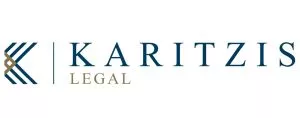I. THE LAW
The Council of Europe has introduced Directive 2018/822, as regards the mandatory automatic exchange of information in the field of taxation in relation to reportable cross-border arrangements, which constitutes the sixth amendment ("DAC6") to Directive 2011/16, on administrative cooperation in the field of taxation.
DAC6 has been transposed into Cyprus law through the amendment of the Law on Administrative Cooperation in the Field of Taxation of 2012 (the "Law"), enacted on 31 March 2021.
DAC6 aims to enhance transparency in the field of taxation and fight against aggressive tax planning.
II. BASIC PRINCIPLES
1. Who?
The obligation to report to the Tax Department rests with the Intermediaries and under specific circumstances with the Relevant Taxpayers.
The Intermediaries are defined as any person that designs, markets, organises or makes available for implementation or manages the implementation of a reportable cross-border arrangement and any person that, having regard to the relevant facts, circumstances and expertise, knows or could be reasonably expected to know that they have undertaken to provide, directly or by means of other persons, aid, assistance or advice with respect to designing, marketing, organising, making available for implementation or managing the implementation of a reportable cross-border arrangement.
For a person to be considered as an Intermediary, at least one of the below conditions must apply:
- be resident for tax purposes in an EU Member State ("Member State");
- have a permanent establishment in a Member State through which the services with respect to the arrangement are provided;
- be incorporated in, or governed by the laws of, a Member State;
- be registered with a professional association related to legal, taxation or consultancy services in a Member State.
The Relevant Taxpayer is defined as any person to whom a reportable cross-border arrangement is made available for implementation, or who is ready to implement a reportable cross-border arrangement or has implemented the first step of such an arrangement. It is important to note, that the obligation to report rests with the Relevant Taxpayer when the Intermediary is waived from the reporting obligation, or when there is no Intermediary.
2. What?
The Intermediaries or the Relevant Taxpayers are obliged to report information on "reportable cross-border transactions".
"Cross-border arrangements" are defined as the arrangements that concern either more than one Member State or a Member State and a third country, when at least one of the following conditions are met:
- not all of the participants in the arrangement are resident for tax purposes in the same jurisdiction;
- one or more of the participants in the arrangement is simultaneously resident for tax purposes in more than one jurisdiction;
- one or more of the participants in the arrangement carries on a business in another jurisdiction through a permanent establishment situated in that jurisdiction and the arrangement forms part or the whole of the business of that permanent establishment;
- one or more of the participants in the arrangement carries on an activity in another jurisdiction without being resident for tax purposes or creating a permanent establishment situated in that jurisdiction;
- such arrangement has a possible impact on the automatic exchange of information or the identification of beneficial ownership.
"Reportable cross-border transactions" are defined as any cross-border arrangement that contains at least one of the "hallmarks" included in Appendix IV of the Law. Under some circumstances, the "main benefit test" should also apply for a cross-border transaction to be reportable. The main benefit test is satisfied if it can be established that the main benefit or one of the main benefits which, having regard to all relevant facts and circumstances, a person may reasonably expect to derive from an arrangement is the obtaining of a tax advantage.
The hallmarks are divided into the below five categories:
- Generic hallmarks linked to the main benefit test: focuses on general characteristics that can be found in tax avoidance schemes and planning, such as confidentiality clauses in relation to tax arrangements, remuneration linked to tax savings. The main benefit test should also apply.
- Specific hallmarks linked to the main benefit test: focuses on characteristics that are an indication that the tax benefit is the objective of the transaction, such as obtaining a loss making company, income to capital conversion. The main benefit test should also apply.
- Specific hallmarks related to cross-border transactions: focuses on cross-border transfers and payments. The main benefit test should apply in certain circumstances.
- Specific hallmarks concerning automatic exchange of information and beneficial ownership: focuses on arrangements that undermine the transparency requirements.
- Specific hallmarks concerning transfer pricing: focuses on intragroup transfers and arrangements that contain uncertain pricing.
The information to be provided to the Tax Authority shall contain the following, as applicable:
- the identification of Intermediaries and Relevant Taxpayers, including their name, date and place of birth (in the case of an individual), residence for tax purposes, TIN and, where appropriate, the persons that are associated enterprises to the Relevant Taxpayer;
- details of the hallmarks that make the cross-border arrangement reportable;
- a summary of the content of the reportable cross-border arrangement, including a reference to the name by which it is commonly known, if any, and a description in abstract terms of the relevant business activities or arrangements, without leading to the disclosure of a commercial, industrial or professional secret or of a commercial process, or of information the disclosure of which would be contrary to public policy;
- the date on which the first step in implementing the reportable cross-border arrangement has been made or will be made;
- details of the national provisions that form the basis of the reportable cross-border arrangement;
- the value of the reportable cross-border arrangement;
- the identification of the Member State of the Relevant Taxpayer(s) and any other Member States which are likely to be concerned by the reportable cross-border arrangement;
- the identification of any other person in a Member State likely to be affected by the reportable cross-border arrangement, indicating to which Member States such person is linked.
3. When?
The reportable information should be provided to Tax Authorities within 30 days beginning:
- on the day after the reportable cross-border arrangement is made available for implementation; or
- on the day after the reportable cross-border arrangement is ready for implementation; or
- when the first step in the implementation of the reportable cross-border arrangement has been made, whichever occurs first.
The Intermediaries that, having regard to the relevant facts, circumstances and expertise, know or could be reasonably expected to know that they have undertaken to provide, directly or by means of other persons, aid, assistance or advice with respect to designing, marketing, organising, making available for implementation or managing the implementation of a reportable cross-border arrangement, shall also be required to file information within 30 days beginning on the day after they provided, directly or by means of other persons, aid, assistance or advice.
The Tax Department has released an announcement informing the public that there will be no imposition of administrative fines for overdue submission of DAC6 information that will be submitted until the 30th of September 2021, in the following cases:
- Reportable cross-border arrangements that have been made between 25 June 2018 and 30 June 2020 and had to be submitted by 28 February 2021.
- Reportable cross-border arrangements that had been made between 1 July 2020 and 31 December 2020 and had to be submitted by 31 January 2021.
- Reportable cross-border arrangements made between 1 January 2021 and 31 August 2021, that had to be submitted within 30 days from the date they were made available for implementation or were ready for implementation or the first step in the implementation has been made, whichever occurred first.
- Reportable cross-border arrangements for which secondary Intermediaries provided aid, assistance or advice, between 1 January 2021 and 31 August 2021 and had to submit information within 30 days beginning on the day after they provided aid, assistance or advice.
The content of this article is intended to provide a general guide to the subject matter. Specialist advice should be sought about your specific circumstances.


